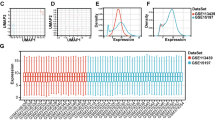Abstract
Acute lung injury, a common component of systemic inflammatory disease, is a life-threatening condition without many effective treatments. However, recent studies have demonstrated that the multifunctional human atrial natriuretic peptide (hANP) exerts anti-inflammatory effects. Therefore, we tested the hypothesis that hANP could prevent lipopolysaccharide (LPS)-induced acute lung injury in a rodent model. Rats received an LPS injection and continuous intravenous infusion (CIV) of hANP or saline solution. We evaluated the anti-inflammatory effects of hANP by histological examination and determination of serum cytokine levels and lung myeloperoxidase (MPO) activity. Histological examination revealed marked reductions in interstitial congestion, edema, inflammation, and hemorrhage in lung tissue harvested 12 h after hANP treatment compared with tissue from rats that received saline treatment after LPS. LPS injection induced elevated cytokine (IL-1β and IL-6) secretion and lung MPO activity, which was also attenuated by hANP treatment. Taken together, these data demonstrate that hANP exerts an anti-inflammatory effect and may have potential as a therapeutic agent to treat systemic inflammatory diseases.



Similar content being viewed by others
References
Rubenfeld GD, Caldwell E, Peabody E, Weaver J, Martin DP, Neff M, Stern EJ, Hudson LD (2005) Incidence and outcomes of acute lung injury. N Engl J Med 353:1685–1693
Zambon M, Vincent JL (2008) Mortality rates for patients with acute lung injury/ARDS have decreased over time. Chest 133:1120–1127
Ware LB, Matthay MA (2000) The acute respiratory distress syndrome. N Engl J Med 342:1334–1349
Brigham KL (1982) Mechanisms of lung injury. Clin Chest Med 3:9–24
Cochrane CG, Spragg R, Revak SD (1983) Pathogenesis of the adult respiratory distress syndrome: evidence of oxidant activity in bronchoalveolar lavage fluid. J Clin Invest 71:754–761
Goodman RB, Strieter RM, Martin DP, Steinberg KP, Milberg JA, Maunder RJ, Kunkel SL, Walz A, Hudson LD, Martin TR (1996) Inflammatory cytokines in patients with persistence of the acute respiratory distress syndrome. Am J Respir Crit Care Med 154:602–611
Donnelly TJ, Meade P, Jagels M, Cryer HG, Law MM, Hugli TE, Shoemaker WC, Abraham E (1994) Cytokine, complement, and endotoxin profiles associated with the development of the adult respiratory distress syndrome after severe injury. Crit Care Med 22:768–776
Worthen GS, Downey GP (1996) Mechanisms of neutrophil mediated injury. In: Evans TW, Haslett C (eds) ARDS: acute respiratory distress in adults. Chapman and Hall, London, pp 99–114
Field LJ, Veress AT, Steinhelper ME, Cochrane K, Sonnenberg H (1991) Kidney function in ANF transgenic mice: effect of blood volume expansion. Am J Physiol 260:R1–R5
Ladetzki-Baehs K, Keller M, Kiemer AK, Koch E, Zahler S, Wendel A, Vollmar AM (2007) Atrial natriuretic peptide, a regulator of nuclear factor-kappaB activation in vivo. Endocrinology 148:332–336
Hagiwara S, Iwasaka H, Matsumoto S, Noguchi T (2007) Nafamostat mesilate inhibits high-mobility group box 1 by lipopolysaccharide stimulation in murine macrophage RAW 264.7. Shock 27:429–435
Murakami K, McGuire R, Cox RA, Jodoin JM, Bjertnaes LJ, Katahira J, Traber LD, Schmalstieg FC, Hawkins HK, Herndon DN, Traber DL (2002) Heparin nebulization attenuates acute lung injury in sepsis following smoke inhalation in sheep. Shock 18:236–241
Koike K, Moore FA, Moore EE, Poggetti RS, Tuder RM, Banerjee A (1992) Endotoxin after gut ischemia/reperfusion causes irreversible lung injury. J Surg Res 52:656
Bhatia M, Moochhala S (2004) Role of inflammatory mediators in the pathophysiology of acute respiratory distress syndrome. J Pathol 202:145–156
Remick DG, Bolgos GR, Siddiqui J, Shin J, Nemzek JA (2002) Six at six: interleukin-6 measured 6 h after the initiation of sepsis predicts mortality over 3 days. Shock 17:463–467
Dinarello CA (1997) Interleukin-1. Cytokine Growth Factor Rev 8:253–265
Tocci MJ, Schmidt JA (1997) Interleukin-1: structure and function. In: Remick DG, Friedland JS (eds) Cytokines in health and disease. Marcel Dekker, New York, pp 1–27
Zimmerman GA, Albertine KH, McIntyre TM (2003) Pathogenesis of sepsis and septic-induced lung injury. In: Lenfant C, Matthay MA (eds) Acute respiratory distress syndrome. Marcel Dekker, New York, pp 245–287
Matthay MA, Zimmerman GA (2005) Acute lung injury and the acute respiratory distress syndrome: four decades of inquiry into pathogenesis and rational management. Am J Respir Cell Mol Biol 33:319–327
Zarbock A, Singbartl K, Ley K (2006) Complete reversal of acid-induced acute lung injury by blocking of platelet-neutrophil aggregation. J Clin Invest 116:3211–3219
Xing J, Birukova AA (2010) ANP attenuates inflammatory signaling and Rho pathway of lung endothelial permeability induced by LPS and TNFalpha. Microvasc Res 79(1):56–62
Qiu Z, Fujimura M, Kurashima K, Nakao S, Mukaida N (2004) Enhanced airway inflammation and decreased subepithelial fibrosis in interleukin 6-deficient mice following chronic exposure to aerosolized antigen. Clin Exp Allergy 34:1321–1328
Dietz JR (2005) Mechanisms of atrial natriuretic peptide secretion from the atrium. Cardiovasc Res 68:8–17
Nishikimi T, Maeda N, Matsuoka H (2006) The role of natriuretic peptides in cardioprotection. Cardiovasc Res 69:318–328
Mitaka C, Hirata Y, Habuka K, Narumi Y, Yokoyama K, Makita K, Imai T (2002) Atrial natriuretic peptide improves pulmonary gas exchange by reducing extravascular lung water in canine model with oleic acid-induced pulmonary edema. Crit Care Med 30:1570–1575
Tanabe M, Ueda M, Endo M, Kitajima M (1996) The effect of atrial natriuretic peptide on pulmonary acid injury in a pig model. Am J Respir Crit Care Med 154:1351–1356
Gothard J (2006) Lung injury after thoracic surgery and one-lung ventilation. Curr Opin Anaesthesiol 19:5–10
Avlonitis VS, Fisher AJ, Kirby JA, Dark JH (2003) Pulmonary transplantation: the role of brain death in donor lung injury. Transplantation 75:1928–1933
Knippen MA (2006) Transfusion-related acute lung injury. Am J Nurs 106:61–64
Michie HR (1988) Detection of circulating tumor necrosis factor after endotoxin administration. N Engl J Med 318:1481–1486
Acknowledgments
The authors thank Hiroaki Kawazato and Aiko Yasuda for helpful advice on the preparation of lung specimens and Dr. Tomohisa Uchida for scoring the lung histology.
Author information
Authors and Affiliations
Corresponding author
Rights and permissions
About this article
Cite this article
Koga, H., Hagiwara, S., Shingu, C. et al. Human Atrial Natriuretic Peptide Ameliorates LPS-Induced Acute Lung Injury in Rats. Lung 188, 241–246 (2010). https://doi.org/10.1007/s00408-010-9239-2
Received:
Accepted:
Published:
Issue Date:
DOI: https://doi.org/10.1007/s00408-010-9239-2




